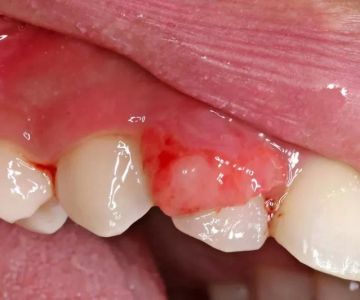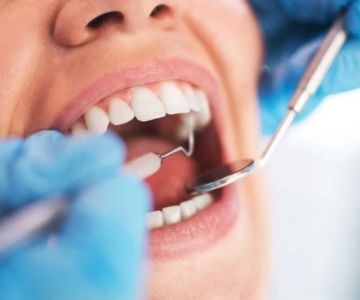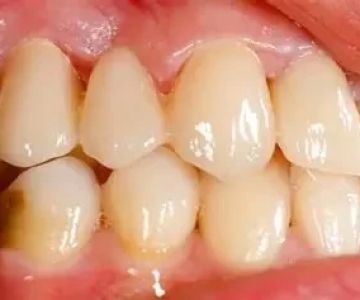
Understanding A Baumannii and Oral Disease
When discussing serious dental health issues, few topics are as concerning as a baumannii oral disease. Acinetobacter baumannii is a bacterium often associated with hospital-acquired infections, but research shows it can also colonize the mouth, creating new challenges in oral health. Unlike common bacteria that cause cavities or gum disease, A. baumannii is often multidrug-resistant, making it harder to treat once it establishes itself in the oral cavity. Its presence in the mouth highlights the connection between systemic infections and oral hygiene.
How It Differs from Common Oral Bacteria
Most oral diseases are caused by bacteria such as Streptococcus mutans or Porphyromonas gingivalis, which contribute to tooth decay and gum inflammation. However, A. baumannii brings a different level of risk. It has been identified in biofilms on dental implants, in saliva, and even in gum tissues of vulnerable patients, especially those with compromised immune systems. The danger lies in its ability to survive harsh environments and resist many antibiotics commonly used in dentistry.
Pathways of Infection in the Mouth
The oral cavity provides an entry point for bacteria into the bloodstream, especially when gums are inflamed or bleeding. A baumannii oral disease can spread when hospital patients use contaminated ventilators, water, or instruments, but it can also occur outside of hospital settings. Once established in the mouth, it can contribute to chronic gum disease, oral ulcers, and systemic infections if not addressed properly.
Case Study: From Hospital to Oral Colonization
One real-world case involved a patient recovering from surgery who developed oral discomfort and inflammation. Lab cultures revealed the presence of A. baumannii, which complicated their recovery. Treatment required specialized antibiotics and intensive oral hygiene to manage the infection. This case illustrates how the mouth can become a reservoir for dangerous pathogens when overall health is compromised.
Symptoms and Warning Signs
Detecting a baumannii oral disease can be difficult because symptoms often resemble common gum problems. Persistent swelling, painful ulcers, bleeding gums, or delayed healing after dental procedures can signal something more serious. Patients may also experience bad breath or unusual taste due to bacterial biofilm formation. For those with weakened immunity, symptoms may escalate quickly, leading to more severe infections.
When to See a Dentist
If standard oral care does not resolve swelling or pain, or if infections recur after treatment, a dentist should evaluate the condition immediately. In some cases, lab cultures are needed to identify resistant strains like A. baumannii.
Prevention Through Oral Hygiene
The best defense against a baumannii oral disease is consistent, thorough oral hygiene. Brushing twice a day with fluoride toothpaste, flossing daily, and using antimicrobial mouth rinses help reduce harmful bacterial colonies. Avoiding tobacco and limiting sugary foods also minimizes bacterial growth. For patients with implants or dentures, extra attention to cleaning surfaces and soaking appliances in antibacterial solutions is essential.
Professional Dental Care
Routine check-ups and cleanings can detect early signs of abnormal bacterial colonization. Dentists can recommend targeted rinses or prescribe stronger antimicrobials when necessary. Families can consult trusted resources like Family Dentistry Online 【 】 to learn about safe preventive strategies and professional recommendations.
Challenges in Treatment
Unlike routine oral infections, treating a baumannii oral disease often requires advanced antibiotics or combination therapies. Dentists and physicians may collaborate to manage both oral and systemic symptoms. Resistance to common drugs makes prevention even more critical, as once the bacterium is established, treatment becomes lengthy and complex.
The Role of Research
Scientists are exploring new antimicrobial agents and probiotic therapies to fight resistant oral pathogens. Clinical trials in the U.S. are also examining how hospital patients can reduce their risk through improved oral care protocols before and after surgery.
Building Awareness and Responsibility
Public awareness of a baumannii oral disease remains limited, but dental professionals are increasingly discussing the risks with patients. By sharing accurate information, encouraging stronger hygiene practices, and promoting responsible antibiotic use, communities can lower the risk of drug-resistant oral infections.
Final Thoughts on Protecting Your Oral Health
A healthy mouth is not just about preventing cavities—it’s also about protecting against rare but dangerous pathogens like A. baumannii. Investing in daily oral care, staying consistent with dental visits, and seeking expert advice when symptoms appear are crucial steps. For personalized solutions, Family Dentistry Online 【 】 provides expert recommendations, helping Americans maintain safer, healthier smiles even in the face of emerging threats.







 Dr. Michael Silverman Dental P.C.4.0 (23 review)
Dr. Michael Silverman Dental P.C.4.0 (23 review) Reese Orthodontics: Karen Reese, DDS, MS4.0 (7 review)
Reese Orthodontics: Karen Reese, DDS, MS4.0 (7 review) SV Dental5.0 (319 review)
SV Dental5.0 (319 review) Parkland Family Dentistry: Dr. Bradley Norman5.0 (3 review)
Parkland Family Dentistry: Dr. Bradley Norman5.0 (3 review) New Image Dental Ltd Dr. Brian J. Fitz5.0 (48 review)
New Image Dental Ltd Dr. Brian J. Fitz5.0 (48 review) All Star Dental Clinic4.0 (322 review)
All Star Dental Clinic4.0 (322 review) The Importance of Oral Health Education During Pregnancy for a Healthy Pregnancy
The Importance of Oral Health Education During Pregnancy for a Healthy Pregnancy Best Tips for Brushing Your Teeth Properly for Healthy Gums: Essential Techniques for Oral Health
Best Tips for Brushing Your Teeth Properly for Healthy Gums: Essential Techniques for Oral Health Why Skipping Dental Checkups Can Lead to Bigger Oral Health Problems
Why Skipping Dental Checkups Can Lead to Bigger Oral Health Problems Advantages of Porcelain Dental Restorations
Advantages of Porcelain Dental Restorations How Can Diabetes Cause Tooth and Gum Problems? Preventing and Managing Oral Health Issues
How Can Diabetes Cause Tooth and Gum Problems? Preventing and Managing Oral Health Issues Healthy Habits for Promoting Good Oral Health and Hygiene: Tips for a Healthy Smile
Healthy Habits for Promoting Good Oral Health and Hygiene: Tips for a Healthy Smile